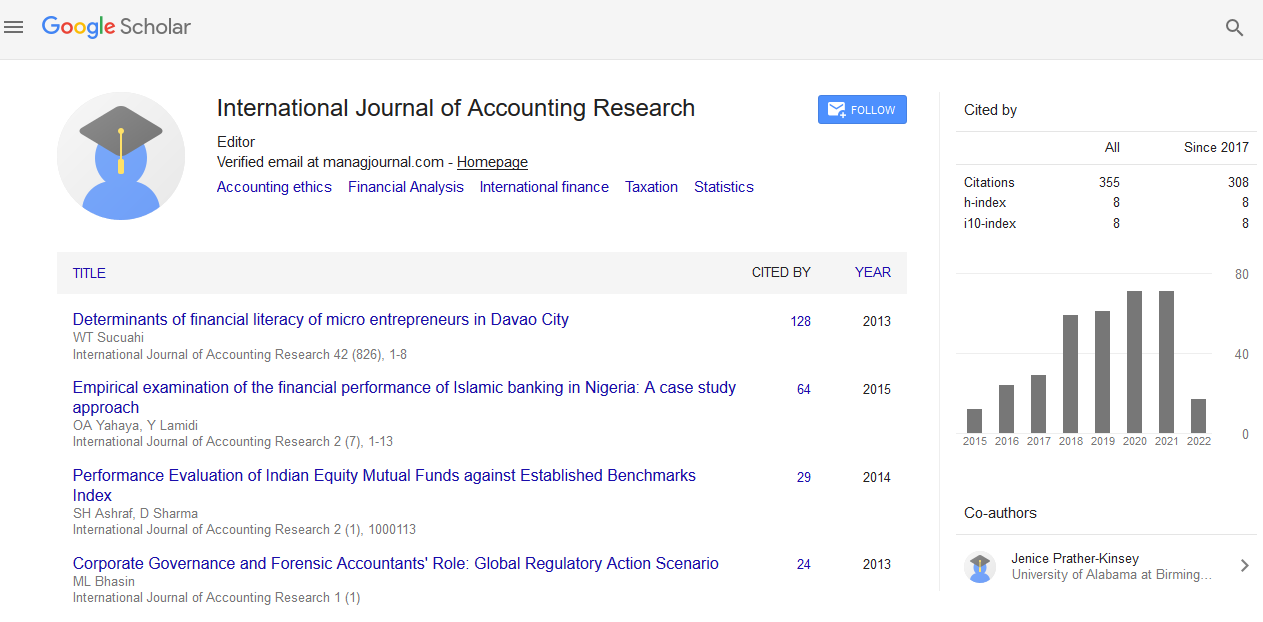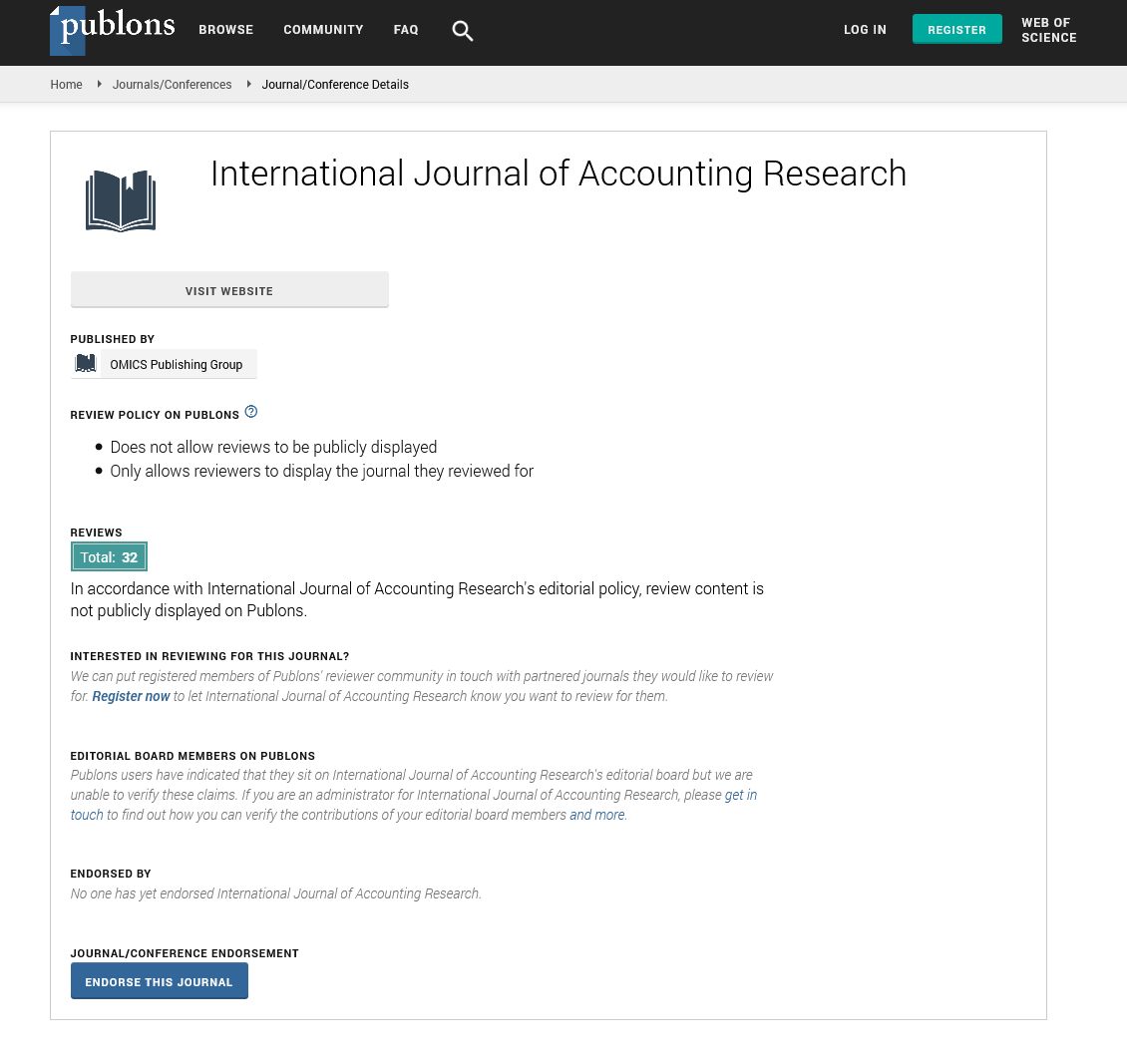Indexed In
- Open J Gate
- RefSeek
- Hamdard University
- EBSCO A-Z
- Scholarsteer
- Publons
- Euro Pub
- Google Scholar
Useful Links
Share This Page
Journal Flyer

Open Access Journals
- Agri and Aquaculture
- Biochemistry
- Bioinformatics & Systems Biology
- Business & Management
- Chemistry
- Clinical Sciences
- Engineering
- Food & Nutrition
- General Science
- Genetics & Molecular Biology
- Immunology & Microbiology
- Medical Sciences
- Neuroscience & Psychology
- Nursing & Health Care
- Pharmaceutical Sciences
Perspective - (2023) Volume 11, Issue 6
Role of Digitizing Energy Audits in Integrating Industry 4.0
Thain Shin*Received: 22-Nov-2023, Manuscript No. IJAR-23-24148; Editor assigned: 24-Nov-2023, Pre QC No. IJAR-23-24148 (PQ); Reviewed: 08-Dec-2023, QC No. IJAR-23-24148; Revised: 15-Dec-2023, Manuscript No. IJAR-23-24148 (R); Published: 25-Dec-2023, DOI: 10.35248/2472-114X.23.11.359
Description
Energy audits are a critical component of the building industry's overall energy reduction strategy. The incorporation of energy audits in the European Energy Savings Directive, as well as the development and publication of various European standards relevant to the energy audit of buildings and building systems, demonstrate the relevance of energy audits. However, because current methods for performing energy audits in buildings do not take into account the most recent developments in the field of Industry 4.0 practices, building physics experts are unanimous in their belief that energy auditing can be further updated and upgraded. This study proposes to provide a new strategy for the advancement of current building energy audit procedures through the adaptation of building information.
The feasibility of a constituent energy audit technique that uses building information models to evaluate building energy use in relation to the building envelope. It is explored if there is room for expanded use of digitization techniques in conducting energy audits, as well as the possibility of developing new tools in this field. The next key findings of this study are an overview and analysis of the Industry Foundation Classes schema building information model data structure and its relationships, which are meant to be utilized to digitize energy audit methodologies. The study technique comprises computerized assessments of building energy consumption as it pertains to building envelope characteristics, as well as economic and energy factor analysis for probable building shell optimization scenarios.
Also highlighted are the evaluation findings for various environmental and budgetary issues using the created tool's building envelope alteration feature. The design and explanation for the backing of the generated tool are also examined. This tool is used to retrieve the information needed to conduct building energy audits. Buildings consume a large amount of energy in all developed countries; as a result, cutting-edge energy sciences research is focusing on ways to make buildings more energy efficient. Given the age of the European Union's building portfolio, energy efficiency is a big issue. With the European Commission's rehabilitation wave effort, it is aimed to substantially reduce energy usage and emissions.
Energy audits are critical in the early stages of the building retrofitting process, with the purpose of identifying insufficient energy utilization and proposing building alterations to reduce primary energy consumption. In view of varied refurbishment techniques, it is critical to underline the importance of complex solutions following building envelope improvement. Heating, ventilation, and air conditioning systems must be improved or altered to maximize the efficiency of refurbished buildings. The first phase in the energy audit process is determining the building's envelope, and this study also provides a fast evaluation of the impact of energy sources on the payback period for building optimization.
The following stage of this project will include a thorough study of building systems using Building Information Modelling (BIM) documentation. Data from BIM models, which provide reliable and sufficient information on the building materials currently in use and their properties, can be utilized to calculate energy use in great detail. Using BIM-based design methods, a digital asset model composed of diverse architectural elements with specified parameters is built. The components of the building model, which comprise the envelope geometry and the thermal resistance or thermal conductivity properties of each material layer, each give sufficient data to be used for the energy assessment of the building envelope.
The qualities attributed to an entity are machine-readable data that may be analysed by various algorithms and used to create assessment methods, depending on the goal of the evaluation. BIM technology is expected to become more widely employed in the near future as a result of increased knowledge of its application and legislative obligations for the construction sector to implement BIM for new project-related investments. In this study, the BIM model is designed to act as a database for building-related data for energy audits. Furthermore, building asset data can be improved with dynamic input and linked to virtual and physical assets via an API. BIM is mentioned in the context of performing energy audits.
Citation: Shin T (2023) Role of Digitizing Energy Audits in Integrating Industry 4.0. Int J Account Res. 11:359.
Copyright: © 2023 Shin T. This is an open-access article distributed under the terms of the Creative Commons Attribution License, which permits unrestricted use, distribution, and reproduction in any medium, provided the original author and source are credited.


